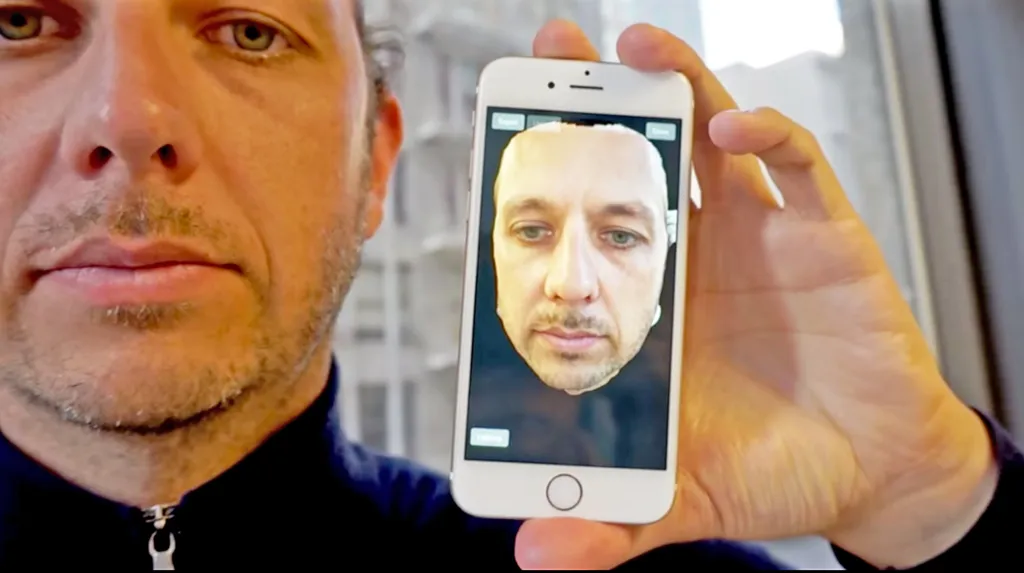When VR takes off we are going to be spending a lot of time socializing in virtual environments through the use of avatars. One of the things that is fantastic about embodying an avatar is that you can be anything or anyone you want to be – but what if you want to be yourself?
The truth is the Uncanny Valley has been standing in the way of bringing true to life rendered avatars to VR, they aren’t photo realistic enough to not be creepy. There are setups like xxArray that allow for incredibly realistic scans of people, but they simply aren’t accessible yet at a consumer level outside of installations – which would be tedious to do on a regular basis (what if you wanted to grow a beard, for example). But what if you could just pull out your phone and scan in your face in 30 seconds or less? I did. And it was awesome.
Obvious Engineering is one of the world leaders in computer vision technology. Their app, Seene, was first released in 2013 and allowed users to scan in objects and scenes with a degree of 3D parallax. That original app was well executed for the time, but still fairly limited in its effectiveness. Since its launch however, Seene has seen some steady improvements that have drastically increased the app’s capabilities, including adding a mode that makes the scans viewable in VR with a cardboard. What’s coming in the next couple months though is pretty awesome.
The above video is a live demonstration of Seene’s upcoming facial scanning technology, which I had the chance to try out earlier this month. Set for a fall 2015 release, the updated app will allow you to quickly scan your face and import it into a game – and into VR.
Speaking with CEO Andrew McPhee we have learned that Obvious Engineering has “inked [their] first major games deal,” with a “AAA gaming company,” which will be launching in “Q3 2015.” In addition to that first major deal, Obvious will be partnering with gaming and VR companies to “introduce character and avatar personalisation to existing and upcoming experiences.” And it won’t just be a flat scan either, “we’re combining the 3D face capture data with a rigged model to power expression, speech and animation.”
It’s more than just faces, Seene is looking to bring full 360-degree object scanning in as well.
The technology behind this isn’t necessarily new, but it is incredibly impressive and easily the best I have seen at this level of accessibility. While other solutions in the past have relied on external hardware – like the Structure sensor for example, Seene relies solely on the camera already embedded on the phone. Even more impressive it is working with the front facing camera – which is much lower res than the camera on the back.
This is still early but Obvious’ technology it is definitely consumer ready. Using the scanning app I found it fluid and simple – although I was only able to test it indoors at the mall where McPhee and I met. Despite a busy background with people passing by during the scan, I was able to accurately scan myself into the app with ease.
As the smartphone market continues to evolve, now alongside the VR market, we will see more and more sensors added to our phones for purposes like scanning. Google has mentioned the idea of bringing Project Tango to phones, for example, and Oculus just acquired Surreal Vision which is working on some incredibly advanced computer vision technology as well. For now, however, McPhee and Seene are content to focus on a platform that exists now, not in the future.
Developer interested in adding Seene facial scanning support to your game or experience? Reach out to the team here.






























